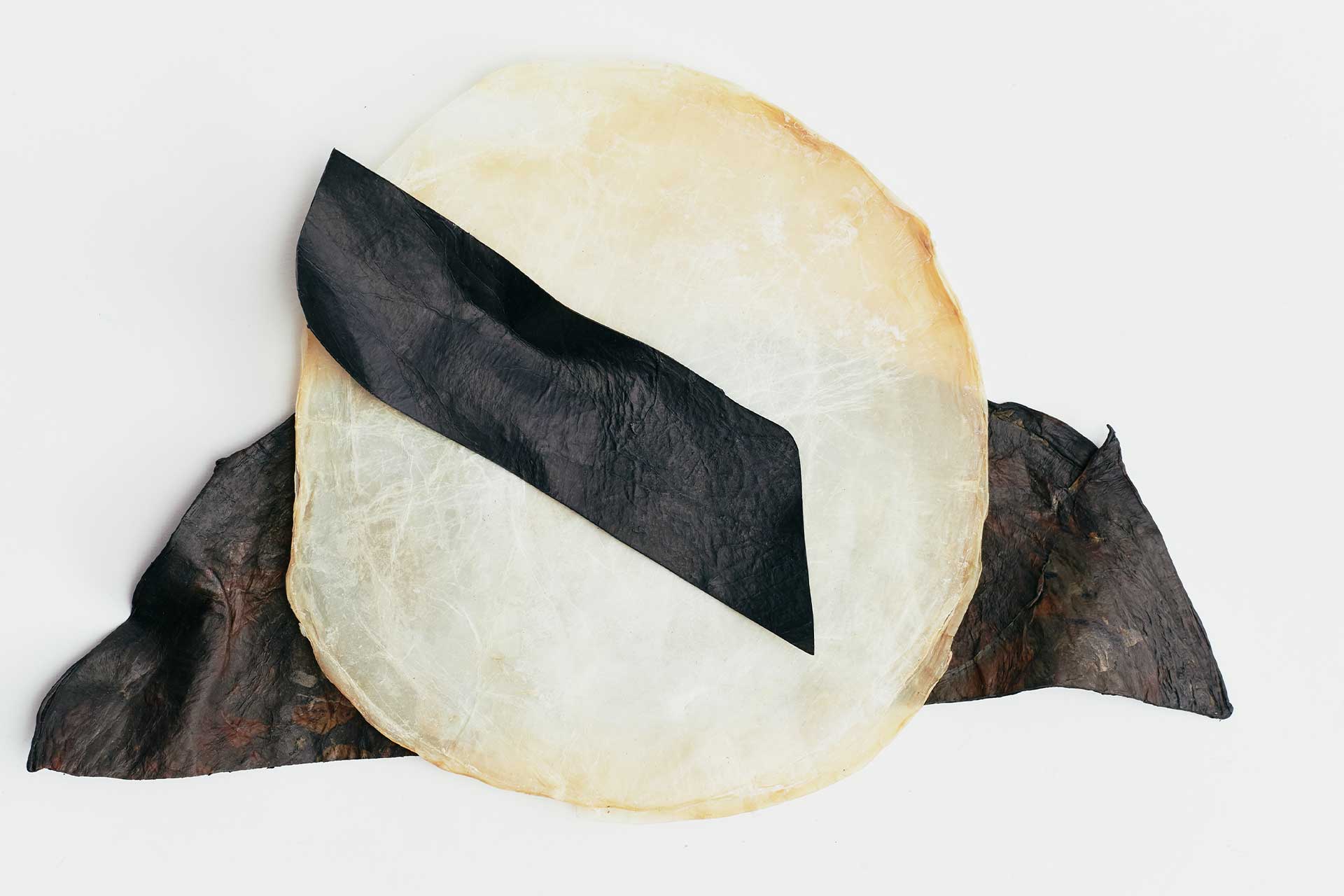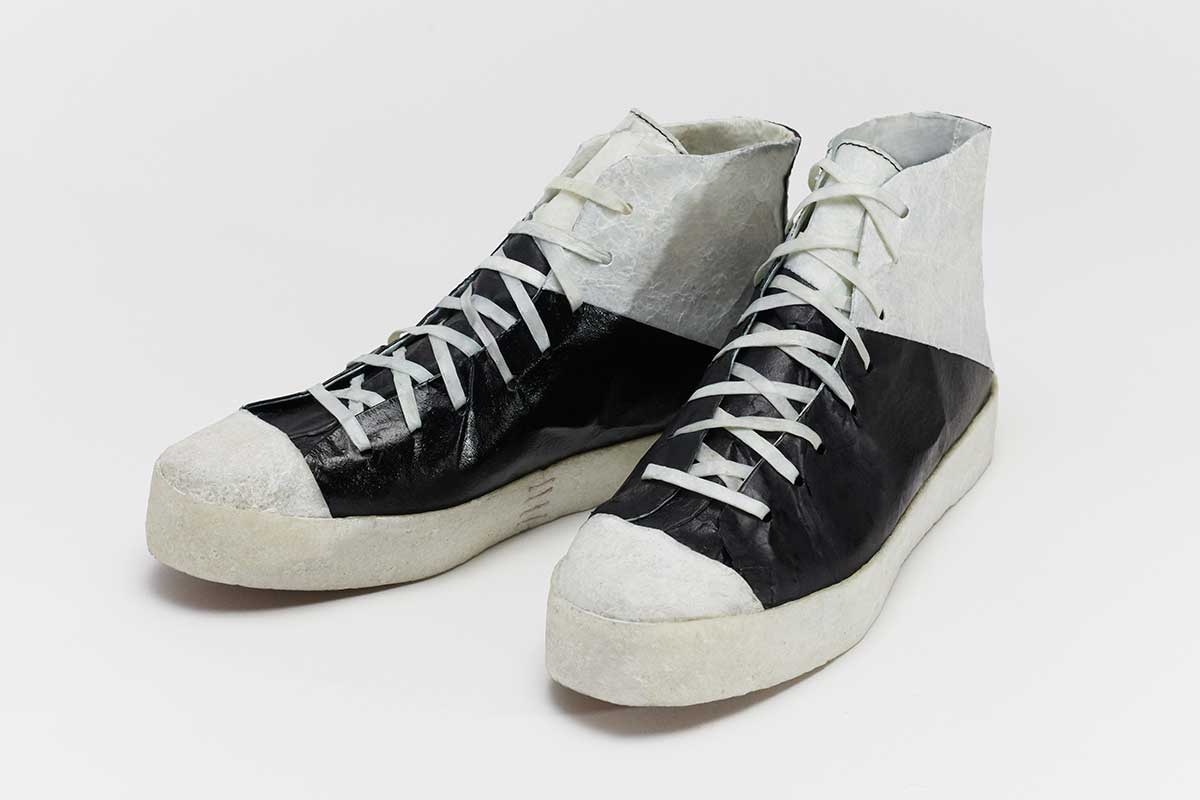«A circular economy can’t exist in a vacuum». In conversation with Theanne Schiros on actively trying to achieve a circular economy within all industries simultaneously
From the lab to the market
There are vast amounts of products being developed in the realm of sustainability and circularity. This poses the question: why don’t we know about them in the market? This issue lies between creating the material in a lab from examples and actually getting it out to the market. «The collaboration and partnerships with scientists and designers is critical for the practical side of things. What does it take to bring a new material into the market? Usually it’s a capsule collection with an established brand. This helps bring things out of the lab», explains Theanne Schiros, Ph.D., co-founder of Werewool and associate professor at the Fashion Institute of Technology.
Pairing up a scientist with a designer
One x One is a program which aims to merge renewable technology with design, pairing up a scientist with a designer. Through the lens of circularity, Schiros was paired with designers Dao-Yi Chow and Maxwell Osborne from Public School NY. The goal was to create a biodegradable sneaker from alternative leather grown in the lab. Merging the world of science and design together is not just for the practical side, but also the psychological. «People can start to understand the complicated aspects of material impact. When the carrier of that message is a t-shirt or a pair of sneakers, we can look at the lifecycle of that object. It makes all the things that we have to consider tangible to a broad audience. That way, they can be educated to avoid greenwashing and such», describes Schiros.
She goes on to give an example regarding bamboo t-shirts. It may seem like a sustainable alternative to cotton, but bamboo hardwood is traditionally used as a building material, «so we know it has to go through a lot of processing for it to become a soft t-shirt». The partnership between a material’s expert and a fashion designer is necessary to make sure that everyone’s needs are met. «By partnering with brands, we can have a circular fashion industry with materials designed to have minimal impact along the way but are also produced and manufactured with a baseline for health and social justice. The agreement between scientists and designers is something which shouldn’t be underestimated».
Everything can biodegrade, even natural black dye
Regarding the sneakers themselves, all the elements are biodegradable. «A sneaker is hard to make sustainable because there are so many different parts. We set out to make a zero-waste sneaker that was built up by microbes and that could be broken down by microbes, using natural dyes and waste-to-resource strategies», illustrates Schiros. One of the challenges was making sure that the final product fit in with Public School’s aesthetic, as well as having the structural integrity needed to be a sneaker.
This component is what led them to deciding on a couple more materials to use. The bottom of the shoe is made from biodegradable natural cork. The band around the shoe and the toe cap are made from bio leather which is blended with natural rubber. Although at a slower rate, this material is still biodegradable and is needed to make the product stronger. The shoelaces, on the other hand, are completely made from bio leather. Avoiding synthetics, and keeping everything completely natural, presented another challenge with regards to the design aesthetics.
Chow and Osborne wanted to create a black and white sneaker; natural black dye is not an easy task to find in nature. This is where Schiros worked on a layered process, using seeds from myrobalan tree, logwood and discarded nails to make iron water for a «quick dip. We really committed to nothing synthetic». Every part of the shoe can biodegrade. After placing about an inch of the bio fabricated leather into her garden, Schiros noted that it had lost seventy percent of its original mass after sixty days.
How lab-grown leather can still have a high environmental impact
Lab-grown leather isn’t a new concept. This particular bio leather is grown from a symbiotic culture of bacteria and yeast (SCOBY), both the same type used in kombucha fermentation. «It lives on rotting fruits and vegetables, takes the sugars and spins pure cellulose nanofiber out of it. It does this because it protects the bacteria; it sort of wraps itself in this sheet of natural cellulose». This process of microbial fermentation supplies the microbes to create animal-free leather which, in theory, has low environmental impact.
However, Schiros points out that these microbes feed on sugars, a water-intensive crop which emits a lot of CO2 during refining. «This class of bacteria has evolved over millennia to live off of very diverse sets of nutrients. We could have circularity built into what we fed the bacteria». This meant that as long as they could purify it, they could use sugars derived from waste streams such as orange juice and other nutrients from tea and coffee grinds. As they were working on growing the bacteria, Schiros realized a way to use further waste streams.
This time it was from the kombucha factories which have excess nano cellulose as fermentation byproduct. Schiros and her team realized that the material properties were similar enough to the nancellulose biofabricated in the lab that they could replace it. «What we found out was the biggest impact, of all the impact categories, was carcinogens. Toxicity from sugar and specifically at the refinery stage. When we grow the material in the lab and use sugars, it has the biggest impact. By swapping out cane sugar with sugar from waste streams, or nanocellulose from side streams, we dramatically lower the impact».
Plant-based tanning
As with conventional leather, the material has to undergo a tanning process to make it more durable and softer. Schiros and her team developed a new tanning method inspired by indigenous tanning techniques. Instead of using organs, they studied their properties and adapted that to cellulose using plants. «Our research breakthrough was figuring out how to make a plant-based tanning. We used plants, seeds and oils to tan the nano cellulose, and that makes it a robust bio leather», explains Schiros. The final product does resemble that of leather, with a few other textures added in the mix. «It’s like a fruit roll up and cow leather had a baby».
Eliminating waste from pattern cutting
There are a lot of alternative types of leather out there but almost all are either composites with plastic-based material or are simply not produced sustainably: large carbon footprint; high usage of fossil fuels; and they don’t biodegrade. However, lab-grown leather from bacteria has another advantage which directly affects the level of waste which the fashion industry produces. Around thirty to forty percent of a material is lost to pattern making, according to Schiros.
«Bio leather can be grown to shape because it’s a living material. It grows to the shape and size of your vessel. With the sneakers, I had the pattern and grew it to the exact shape of the sneakers so there was zero waste in production». Similarly, the dyeing process can take place at the same time as the leather is being grown, reducing the risk of further waste in the production. «You can grow or cast materials to shape (that are colored) and you can tailor that during the bio fabrication process instead of post processing. This also reduces the water demands», says Schiros. This can be done by making a natural dye vat in the liquid media which feeds the bacteria to make the nano cellulose sheet.
Closing loops everywhere
The fact that the fashion and food industries are amongst the top in waste production is not news. This waste is what blocks the act of achieving circularity. As Schiros puts it: «At every stage, when you can close loops across agriculture and waste streams, you are closing energy and material loops across the most polluting industries. This is why fashion is so polluting and environmentally destructive and where there are huge opportunities for fashion to reduce its climate impact; by closing loops across the other industries. You can take an agricultural waste product and use it as a raw material. Now, not only are you achieving circularity, you’re having circularity across fashion and industrial agriculture». This school of thought is what would ensure a reduction in waste, not just to help with sustainability in the resources we use, but it automatically takes into consideration all other industries: «A circular economy can’t exist in a vacuum because you source things from all different places».
Scaling up: the dilemma
When discussing scaling up this process, a particular element needs to be taken into consideration. Fermentation is easy to scale up: the wine and beer industry do it all the time. Natural dyes are a bit harder but, done correctly, it too can scale up. Prefabricated vessels for each product to the shape of the pattern can also be done to grow the material. However: «What about scale? Do we need to be making material at the scale we are at now when eighty-five percent of textiles produced each year go to landfill?» Fixing problems from the middle-up is not going to result in a long term solution. What needs to happen first is solving the root of the issue: overconsumption in a capitalist society. «The straight forward answer is that it can be scaled. But do we need to scale to reach the current demand»?
The material innovation and technology
Achieved by Theanne Schiros in scientific partnership with Prof. Helen Lu and Romare Antrobus of Columbia University Biomedical Engineering. Schiros was partnered with Public School NY, a brand known for its focus on circularity and sustainable production. They developed a sneaker which is fully biodegradable and colored with natural dyes. Bespoke shoemaker, Anne Marika Verploegh Chassé, built the sneakers. On view from December 2021 to March 2022, the sneakers are on exhibit at the Wyss Academy for Nature, Bern.




















